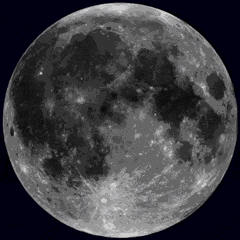<p >The Russian Army has received new batches of T-90M and <a href="https://militarywatchmagazine.com/article/russian-t72b3-abrams-ukraine" target="_blank">T-72B3M main battle tanks</a>, which were delivered to frontline units from the Uralvagonzavod tank plant in the first week of May, and benefit from a number of capability improvements reflecting lessons learned from high intensity combat in the Ukrainian theatre. New variants of the two tanks benefit from reinforced rooftop cage armour to provide physical protection against drones, loitering munitions, and top-attack anti-tank guided missiles, which have been used extensively by both sides against enemy armour. Both tank classes also benefit from electronic warfare antennas mounted at the front hull intended to intercept low-flying drone threats, which are suspected to be tied to anti-drone jammers such as the Volnorez system. Following reports in August that T-90Ms&nbsp;<a href="https://militarywatchmagazine.com/article/t90m-arenam-protection-missiles" >were integrating</a>&nbsp;the Arena-M active protection system, and subsequent reports that T-72s modernised with similar levels of armour protection were also to receive the system, new batches of the tanks have reportedly been delivered with the Arena-M providing significantly greater survivability. The first footage of T-72 tanks deployed on the frontlines equipped with the Arena-M system was <a href="https://militarywatchmagazine.com/article/new-enhanced-russian-t72-first-active-protection-system-ukrainian-frontlines" >publicised</a> in March 2025.</p><p ><img src="https://militarywatchmagazine.com/m/articles/2025/05/09/article_681d78649bbd86_36306813.png" title="T-72B3M with Arena-M System"></p><p >The Arena-M uses a radar system to continuously monitor the surrounding environment for incoming threats, and when detecting incoming projectiles tracks them automatically, calculates their trajectories, and deploys protective munitions to intercept and destroy them before they impact the tank. It can reportedly intercept rockets, missiles and high explosive anti tank shells travelling at up to 1000 meters per second, and can do so 50 meters away.&nbsp;Russian tanks previously integrated only the Shtora soft kill protection system, which could not actively engage incoming projectiles but instead alerted the crew and helped tanks to mask themselves. Although Russia has been developing a hard kill active protection system since the 1990s, with multiple variants of the Arena system having been developed, a lack of funding resulted in these primarily being marketed for export. Although Russia has been well behind the Koreas, China and Israel in integrating hard kill active protection systems onto its tanks, it has rapidly adopted advanced anti-drone countermeasures to respond to the continuous deliveries of tens of thousands of unmanned aircraft to Ukraine by countries across the Western world and by NATO member Turkey.&nbsp;</p><p ><img src="https://militarywatchmagazine.com/m/articles/2025/05/09/article_681d7a43192486_69956403.PNG" title="T-90M with Nakidka Heat Signature Reducing Thermal Cover"></p><p >Uralvagonzavod is the only one of five major Soviet tank factories that were operational in the 1980s which still produces tanks, and may represent the largest tank plant in the world with the sizes of rival Chinese and North Korean facilities remaining unknown. Orders for newly built T-90M tanks increased rapidly due to both losses of older tank classes in the Ukrainian theatre, and to the increased tensions with an&nbsp;<a href="https://militarywatchmagazine.com/article/finland-nato-accession-russian-security" >expanding NATO</a>&nbsp;which has placed&nbsp;<a href="https://militarywatchmagazine.com/article/us-finland-f35-russian-border-deal" >further pressure&nbsp;</a>on Russia’s defences. The tank’s performance has received particularly high <a href="https://militarywatchmagazine.com/article/putin-medvedev-t90m-best-tank" target="_blank">praise</a> from senior Russian officials. The tank’s&nbsp;2A46M-5 125mm smoothbore gun and Kalina fire control system allow it to deploy the wide range specialised munitions, some of which began to be&nbsp;<a href="https://militarywatchmagazine.com/article/russian-tanks-in-ukraine-finally-seen-with-top-end-anti-armour-rounds-how-will-they-impact-the-battlefield-as-leopard-2-deliveries-near" target="_blank" >seen in Ukraine</a>&nbsp;in early 2023, while its survivability benefits from the integration of Relikt explosive reactive armour as well as isolation of munitions from the remainder of the vehicle internally. Like all Russian tanks, its ability to use explosive fragmentation projectiles provides an important advantage in infantry support roles, which has been the primary role for which tanks have been used by both sides in the conflict. Very limited procurement of the T-90M preceding the escalation of hostilities in Ukraine in 2022, largely due to cost saving measures, meant that the T-90M played only a limited role in hostilities in the war’s first two years, with Soviet-built tanks being relied on far more heavily.</p><p ><img src="https://militarywatchmagazine.com/m/articles/2025/05/09/article_681d776590df03_02121238.jpeg" title="Russian Army T-90M in the Ukrainian Theatre" ></p><p >Acquisitions of newly built T-90M tanks have been supplemented by deliveries of upgraded variants of older tank models, including&nbsp;<a href="https://militarywatchmagazine.com/article/russian-t72-evolution-2020s" >enhanced T-72s&nbsp;</a>such as the T-72B3M.&nbsp;High levels of attrition to the Russian T-72 fleet in 2022 in particular have reportedly increasingly depleted Russia’s vast reserves of Soviet-built T-72s in storage, with tank production today at just a small fraction of Soviet era levels meaning that replenishment of these will remain unlikely. Russia’s tank industry has reportedly succeeded in raising output from the approximately 130 tanks produced annually before 2022, to over 200 tanks annually today, and according to some estimates significantly more. This nevertheless planes in comparison to Soviet production of over 4000 tanks annually in the 1980s, thousands of which were more complex T-80 tanks that were significantly more costly to produce than the T-72 or T-90. In parallel to T-90 production, Russian industry is working to re-establish production of the T-80, and to bring the much delayed T-14 next generation main battle tank into service, with the latter intended to be produced at Uralvagonzavod alongside the T-90M.</p>
